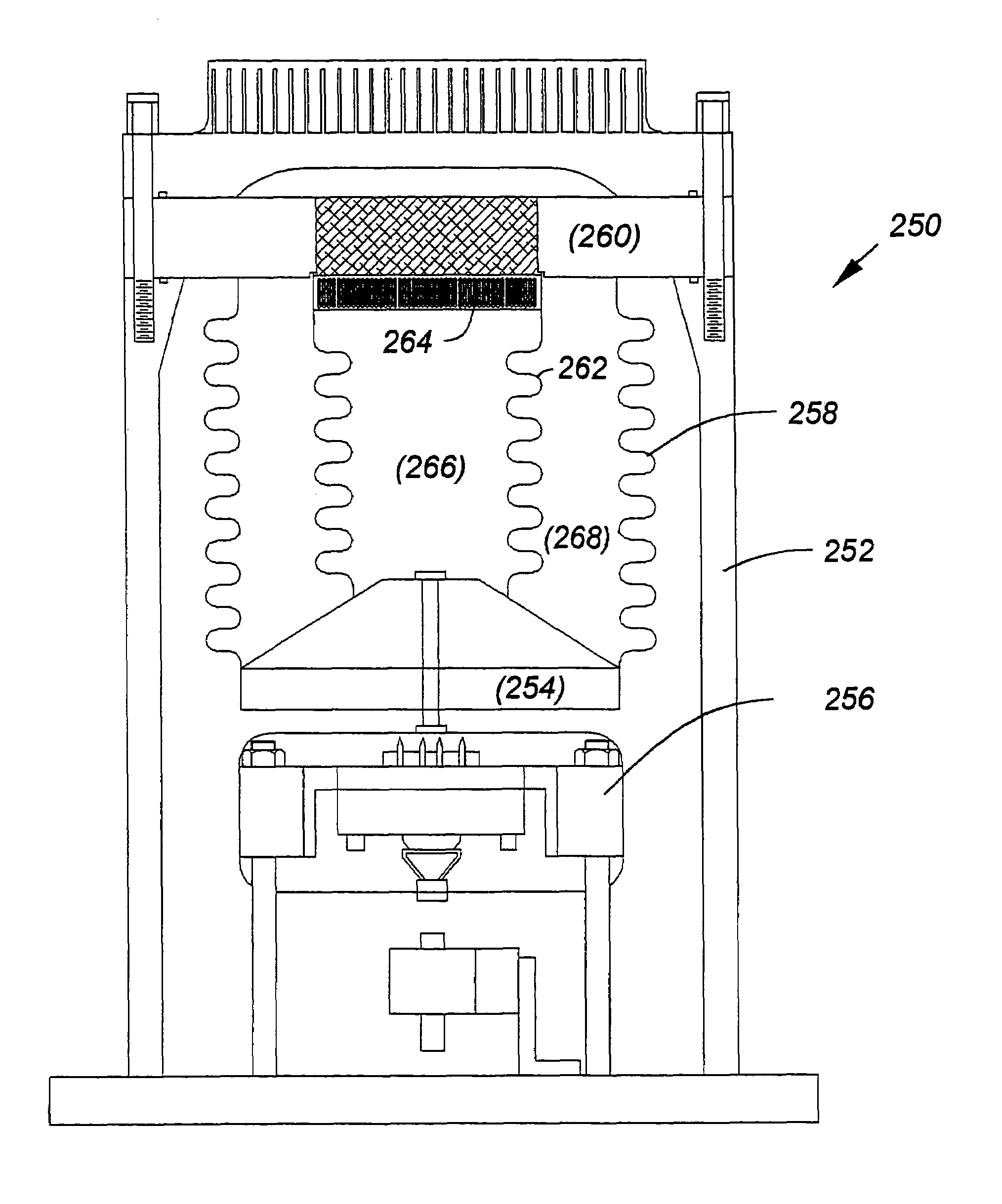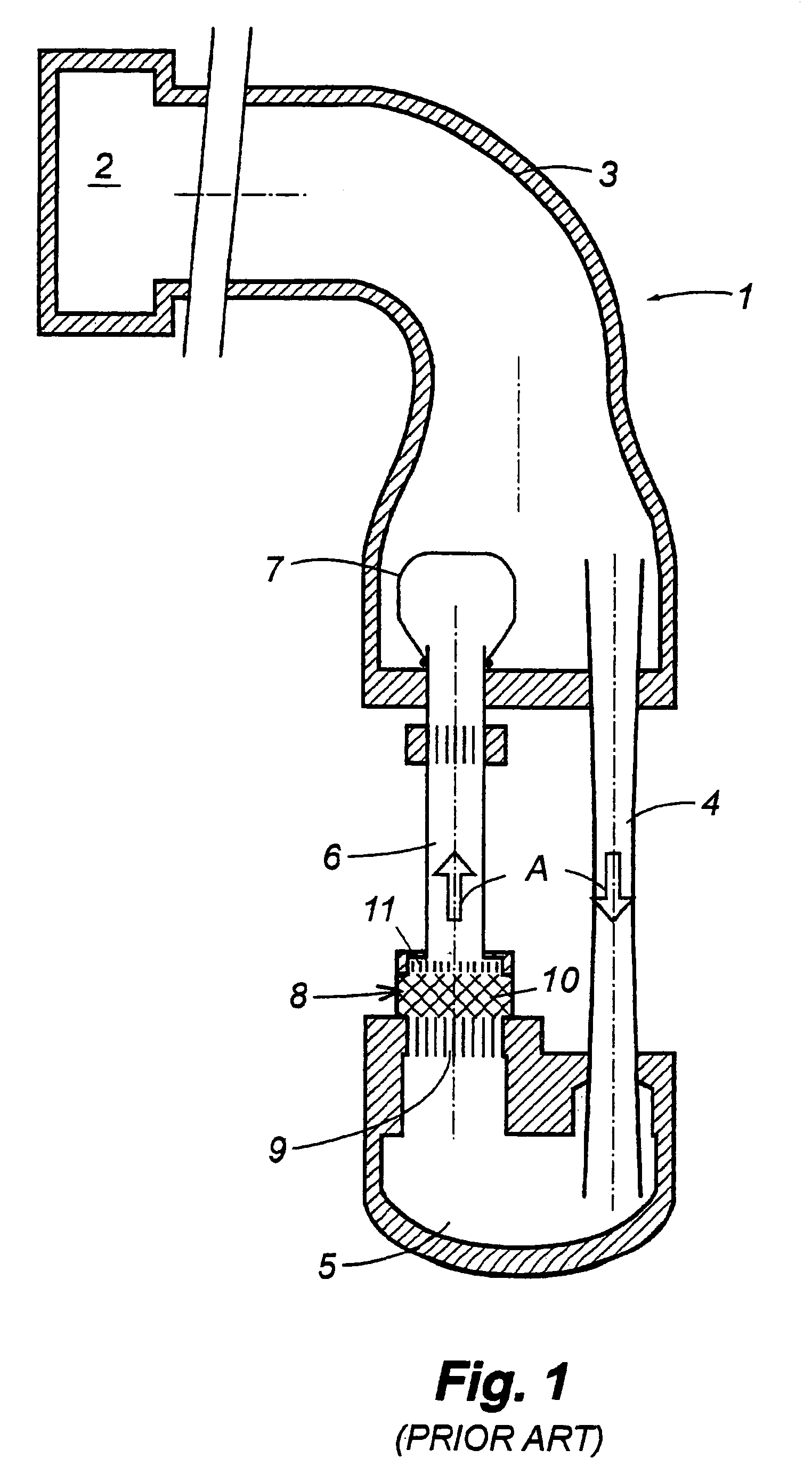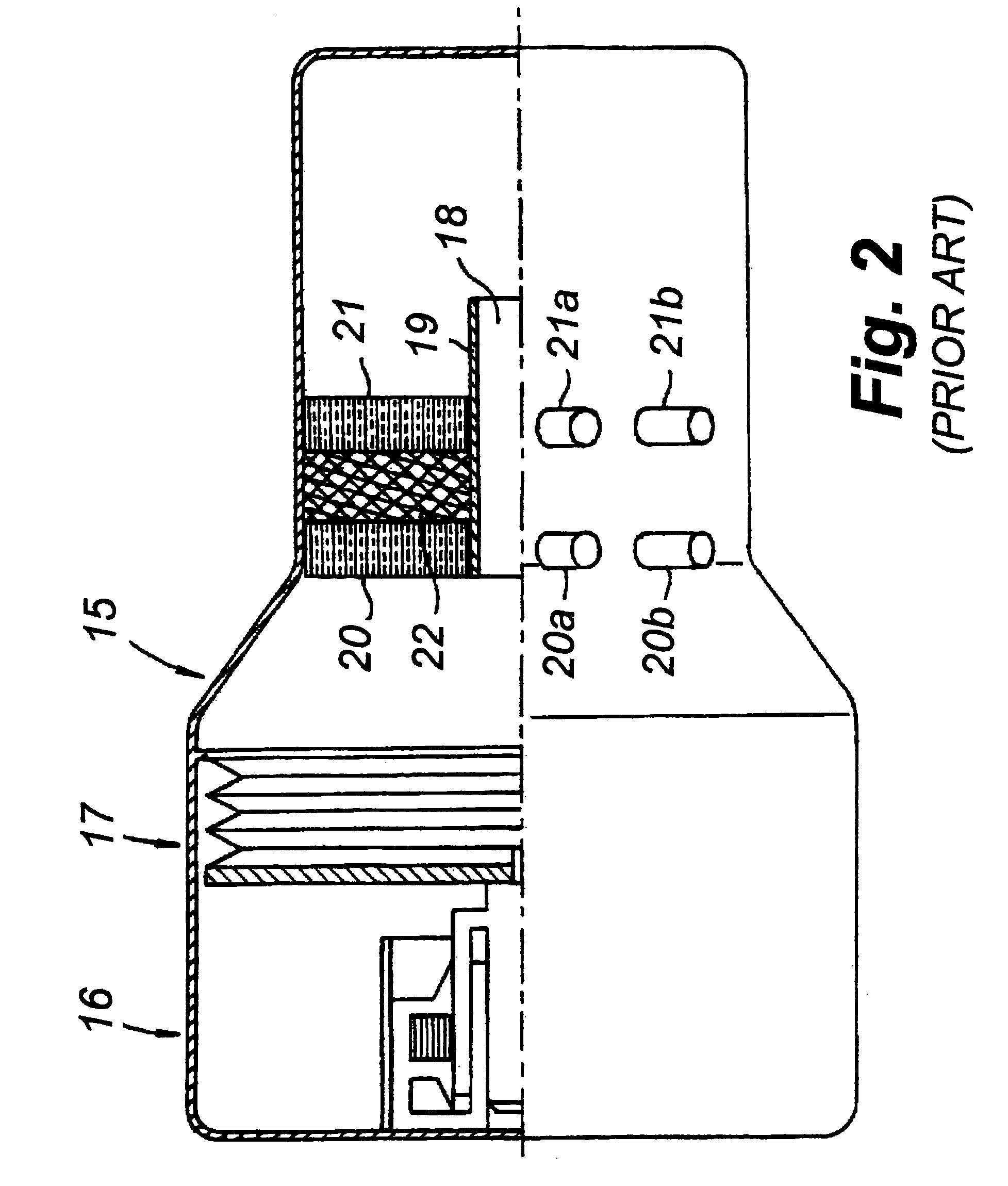Thermoacoustic device
a technology of thermoacoustic devices and refrigeration pumps, which is applied in the direction of mechanical vibration separation, machines/engines, lighting and heating apparatus, etc., can solve the problems of not having a large-scale commercial success of stirling engines and refrigerators, and the efficiency approach to power production or refrigeration has not yet become commercially viable in most applications. to achieve the effect of suppressing gedeon streaming
- Summary
- Abstract
- Description
- Claims
- Application Information
AI Technical Summary
Benefits of technology
Problems solved by technology
Method used
Image
Examples
unfolded embodiment
[0120]FIG. 15 provides a thermoacoustic device 280 wherein the multiplier volume 282 is not positioned between the piston 284 and the support 286. Instead, the multiplier volume 282 is on the other side of the support 286. As shown, the device 280 has a pressure vessel 288 with a linear motor 290 positioned in the lower end. The linear motor oscillates the power piston 284, which is a clearance seal design, with a clearance seal 292 at the perimeter of the piston 284. Alternatively, a compliant enclosure design may be used, wherein a bellows extends between the piston 284 and the support 286. Passages 294 are defined through the support 286 to allow fluid communication between the upper and lower halves of the device 280. The multiplier volume 282 is housed inside of a multiplier cylinder 296 that is closed at its upper end by a multiplier piston 298. The hot heat exchanger at 300 is adjacent to, and may be housed in, the multiplier volume 282. As shown, the hot heat exchanger may b...
PUM
 Login to View More
Login to View More Abstract
Description
Claims
Application Information
 Login to View More
Login to View More - R&D
- Intellectual Property
- Life Sciences
- Materials
- Tech Scout
- Unparalleled Data Quality
- Higher Quality Content
- 60% Fewer Hallucinations
Browse by: Latest US Patents, China's latest patents, Technical Efficacy Thesaurus, Application Domain, Technology Topic, Popular Technical Reports.
© 2025 PatSnap. All rights reserved.Legal|Privacy policy|Modern Slavery Act Transparency Statement|Sitemap|About US| Contact US: help@patsnap.com



